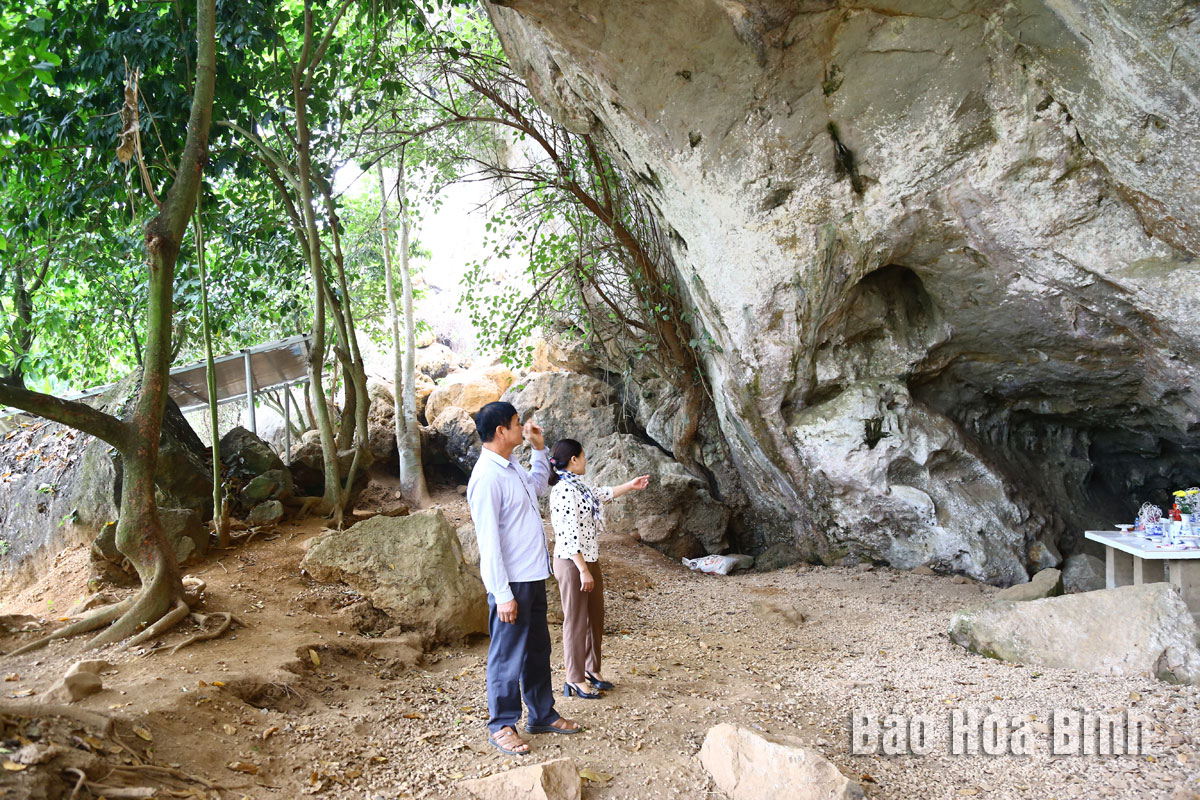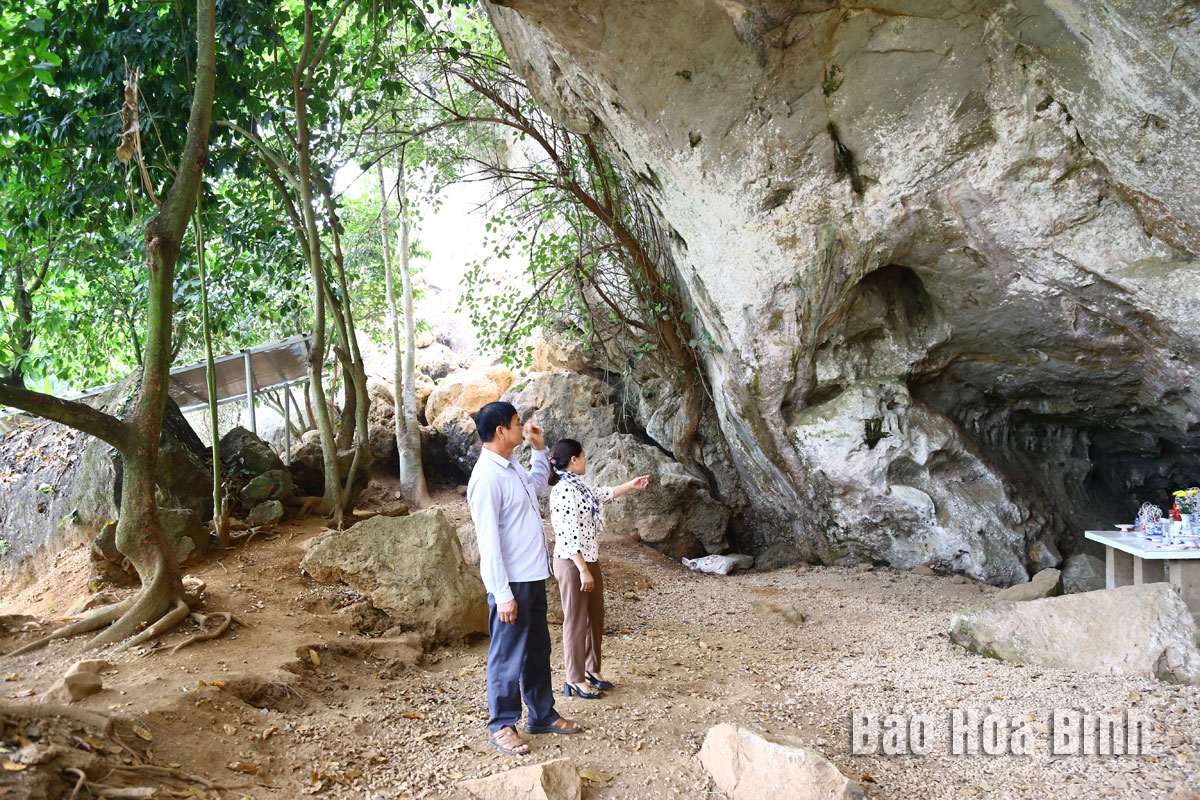
Holding unique values representing the world-famous Hoa Binh Civilisation, the archaeological sites of Trai Hamlet Cave and Vanh Village Stone Shelter in Lac Son district were recognised as special national relic sites in July.
Local residents have paid attention to protecting
natural landscape and environment around special national relic site of Vanh
Village Stone Shelter in Yen Phu commune, Lac Son district.
Exploring
Trai Hamlet Cave, Vanh Village Stone Shelter
Trai Hamlet Cave is located on a separate
limestone mountain, 15m above a nearby valley. It is more than 13m deep and has
an entrance 8m wide and 10m high. It contains food traces of early humans,
mainly stream and mountain snails. Statistics show that there are more than
30,000 shells per cubic metre of sediment inside this cave. Archaeologists have
found a substantial number of animal bone pieces here. Analyses indicate that
these are bones of animals living in the surrounding environment that early
humans caught for food. Rice husks and some half-burned grains have also been
discovered at a depth of 0 - 80cm underground, and they could belong to later
periods. This cave was listed as a national historical relic site in 2001.
Not far from Trai Hamlet Cave, Vanh Village
Stone Shelter is located at the foot of Da Trang (White Stone) Mountain in Vanh
village of Yen Phu commune. It is a relatively large stone shelter which is 18m
deep and has a 30m-wide entrance. It is about 5m higher than the surrounding
valley. The site was discovered and excavated by M. Colani in 1929 and also
named by the French archaeologist. Excavations at this place have revealed a
3.7m-thick cultural layer that contains mainly snails, clay, ashes, and mollusc
shells. Stone objects, human and animal bone pieces, horns, ceramic items,
stoves, and snail shells have also been found here. The shelter was named a
national historical relic site in 2003.
Promoting
relic sites’ values
Given their precious values, the two national
archaeological relic sites were recognised as special ones on July 18, 2024.
Bui Van Hung, head of the culture and
information division of Lac Son district, said that home to the two
archaeological relic sites typical for the prehistoric Hoa Binh Civilisation,
Lac Son has continually paid attention to the management, protection,
preservation, and promotion of the sites’ values. It is stepping up
communications about the places’ significance and values among the entire local
population so as to attract the public’s support for protecting the surrounding
landscape and environment. Tourism, learning, and scientific research
activities connected with the sites are also being promoted.
In the time ahead, to bring into full play the
values of these two special national relic sites, local authorities will
continue to seriously carry out management and protection activities in line
with the Law on Cultural Heritage, devise appropriate policies to encourage and
create conditions for people and businesses to engage in relic protection and
tourism development, and build new roads to connect arteries with the two
sites.
Additionally, the district will propose relic
management and rehabilitation measures to higher-level authorities in an effort
to become a destination on the tourism maps of Hoa Binh province, the region, and
the country, he added.
As a land deeply intertwined with human history and Vietnam’s millennia-long journey of nation-building and defence, Hoa Binh is often revered for its epic tales and legends.
Residents of Hoa Binh boast a rich cultural identity, reflected in their unique language, traditional attire, customs, and folk melodies – described as "sweet as honey, clear as a mountain stream.”
Lac Son district’s Vu ban town held the 2025 Truong Kha temple festival on April 12–13 (the 15th–16th days of the third lunar month). Since its revival in 2019, the festival has been organised every three years, preserving valuable intangible heritage while meeting the community’s cultural and spiritual needs.
The clothing of women reflects the culture of the Muong, Thai, Tay, Dao, and Mong ethnic groups in the northern province of Hoa Binh.
Gongs hold a special place in the cultural and spiritual life of the Muong ethnic people in Hoa Binh province. More than musical instruments, they are an indispensable part of community rituals and collective memory, echoing through generations as a spiritual thread linking the past, present, and future.
Preserving and promoting the cultural values of the Muong ethnic group has become an urgent task in the current context, as many traditional values face the risk of fading away. This effort requires not only protecting the cultural identity but also eliminating outdated customs and developing a modern cultural lifestyle, contributing to sustainable values for the Muong community in Hoa Binh province.
The Muong ethnic culture, deeply rooted in Vietnam’s mountainous north, continues to be preserved and revitalised by dedicated individuals and communities determined to safeguard their ancestral identity.



